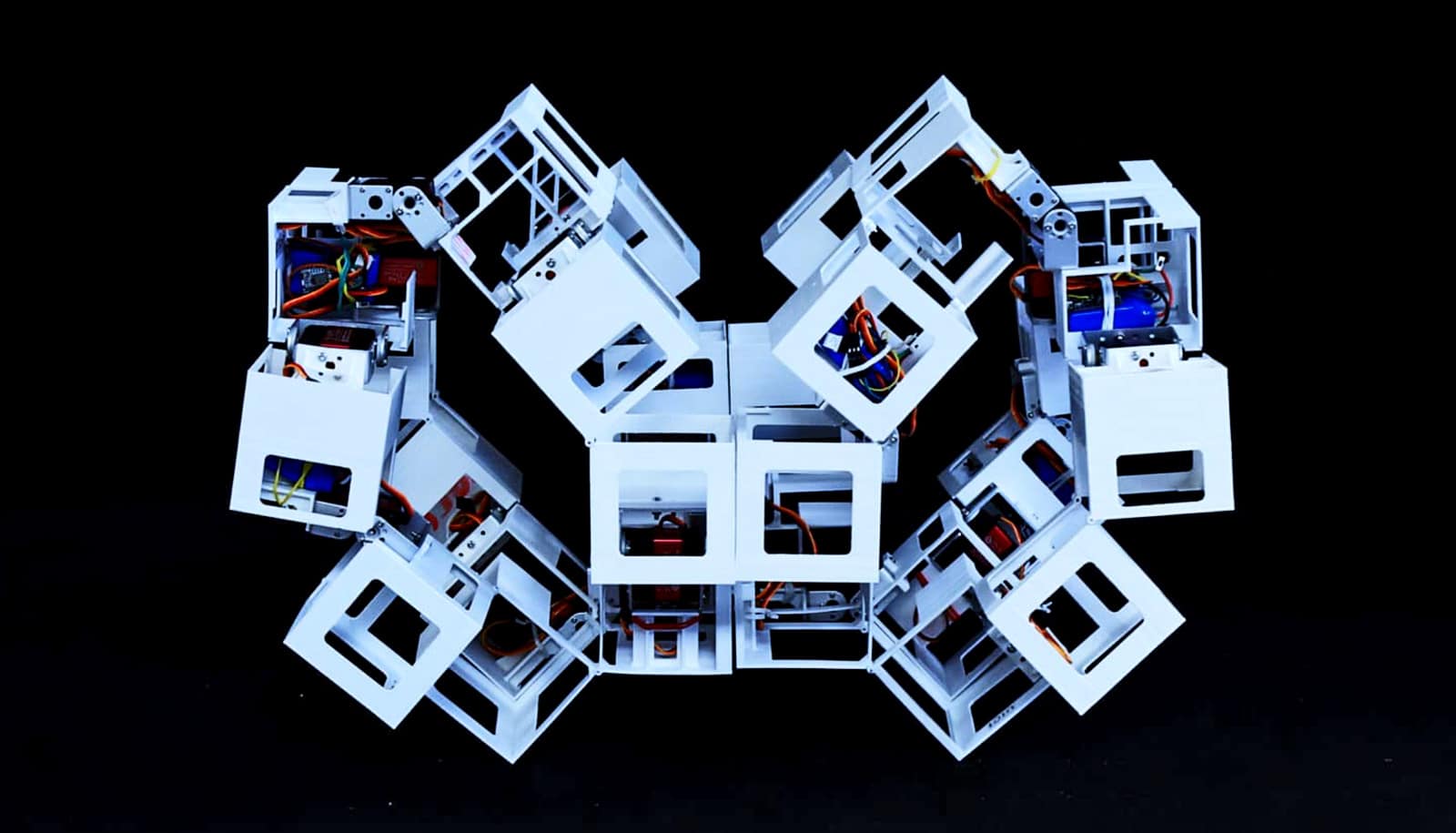Sticking points are simply intrinsic to structures designed to fold themselves, according to new research.
Scientists and engineers are fascinated by self-folding structures. Imagine the possibilities: Heart stents that unfold in the right location or pop-up tents that assemble at the press of a button, as well as nanoscale versions for tiny machines. But sometimes these structures get stuck during the folding process, and scientists don’t know why.
“No matter how clever the design, there are always many more ways to fold incorrectly and get stuck than to fold correctly…”
“People thought you could engineer around it, but it really looks like there are fundamental limits,” says University of Chicago graduate student Menachem Stern, the first author of the paper.
Structures designed to self-assemble often start out correctly, but then the folding peters out, leaving behind islands of properly folded parts. To explore why, the team created a set of mathematical models.
When designing structures that can fold themselves, whether paper origami or tiny nanomachines, scientists start by pre-creasing the folds they need. But this also creates a set of invisible “distractor” branches. The more pre-creases they add, the more distractor branches form, and the origami is more and more likely to get stuck.
“No matter how clever the design, there are always many more ways to fold incorrectly and get stuck than to fold correctly,” says Arvind Murugan, assistant professor in the James Franck Institute and coauthor of the paper.
“We realized that this problem of having many more ways to do something incorrectly than correctly shows up in many other areas of science and mathematics, including the design of protein structures in biology and the design of Sudoku puzzles.”
Using these connections, there are ways to mitigate the problem even if it is intrinsic, say Stern, Murugan, and Matthew Pinson, the study’s third author.
Lego and Play-Doh inspire particles that self-assemble
Their findings include a set of predictions for where to place hinges when designing folds, as well as for identifying problem areas and how to fix them—which could apply to everything from paper origami to micro-machines to self-assembling tents.
The researchers report their new findings in the journal Physical Review X.
Funding came from the University of Chicago Materials Research Science and Engineering Center, National Science Foundation.
Source: University of Chicago



